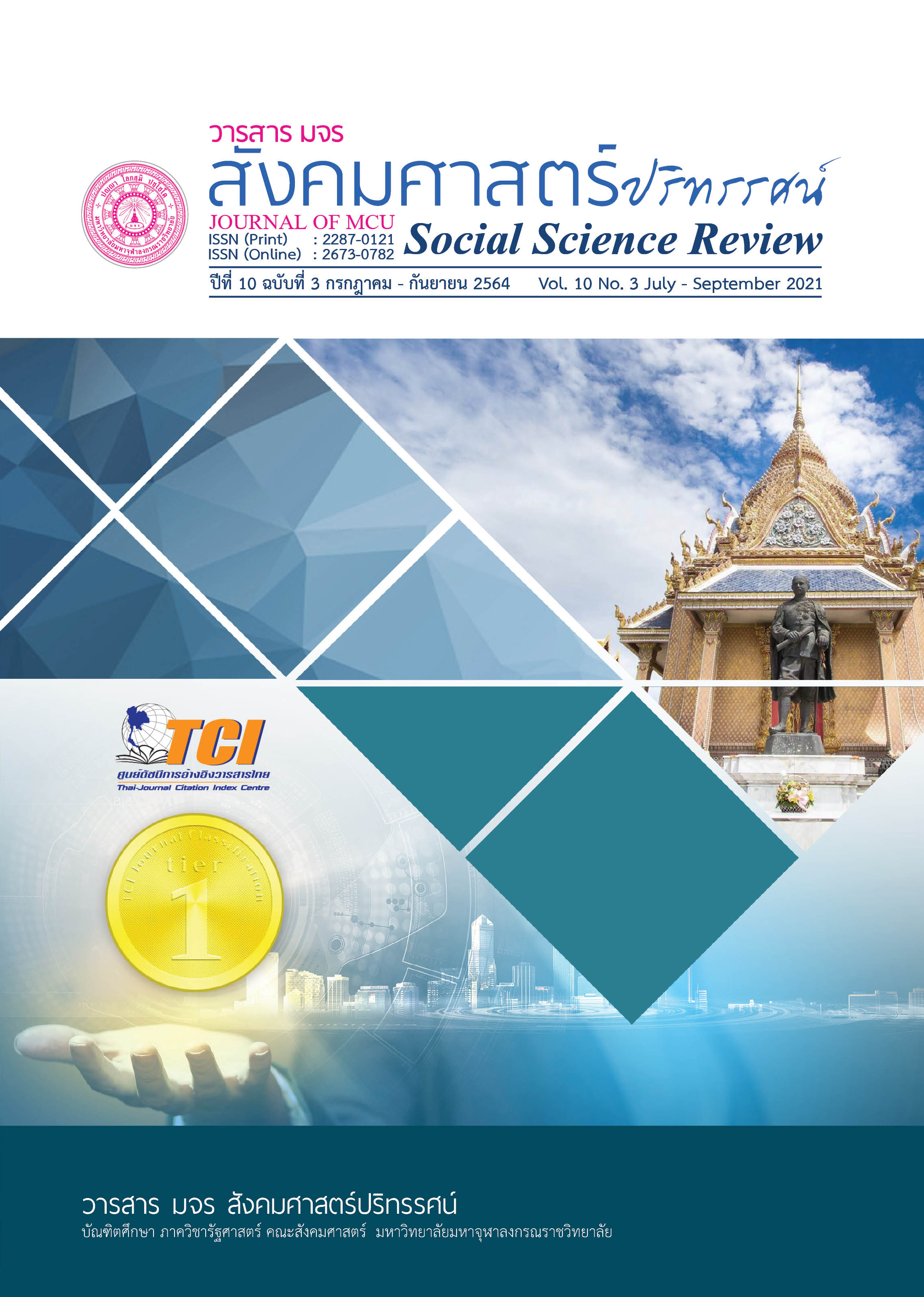การพัฒนาผู้ครองเรือนโดยมงคลชีวิตที่ 1 ถึง 10 ในพระพุทธศาสนา
คำสำคัญ:
ผู้ครองเรือน, การพัฒนา, มงคลชีวิตที่ 1 ถึง 10, พระพุทธศาสนาบทคัดย่อ
บทความวิชาการนี้ ได้กล่าวถึง การพัฒนาผู้ครองเรือนซึ่งเป็นเรื่องสำคัญเรื่องหนึ่งในโลกียภูมิที่เราต้องเวียนเกิดเวียนตายครั้งแล้วครั้งเล่าในสังสารวัฏ โลกียภูมิของเราทุกวันนี้มีความสับสน สลับซับซ้อนและแข่งขันสูง ประชาชนพลเมืองทั่วโลกพยายามเอาเปรียบแย่งชิงผลประโยชน์ซึ่งกันและกัน ทั้งในทางถูกกฎหมายและผิดกฎหมาย มนุษย์เราประกอบด้วยกายกับใจ ทางกายต้องการบำรุงเลี้ยงด้วยอาหารสิ่งบริโภคและมีสุขภาพดี ในทำนองเดียวกัน ทางใจก็ต้องการอาหารใจหรือธรรมเกี่ยวกับการไม่ทำชั่วทั้งปวง ทำดีให้ถึงพร้อมและทำใจให้ผ่องใสสำหรับป้องกันกิเลส (โลภ โกรธ หลง) เพื่อที่จักได้พัฒนาตัวเขาเหล่านั้นให้เป็นประชาชนพลเมืองดี บทความวิชาการนี้ ได้พบว่า มงคลชีวิตที่ 1 ถึง 10 ควรจักนำไปประยุกต์ใช้ให้เกิดประโยชน์สำหรับการพัฒนาผู้ครองเรือน เพราะมงคลชีวิตเป็นข้อปฏิบัติที่นำไปสู่การพัฒนา เกิดความสุข ความมั่งคั่งที่เรายินดี มงคลชีวิตยังสามารถนำไปสู่ความก้าวหน้า และพัฒนาการในชีวิตนี้และชีวิตในชาติหน้า ไปถึงตราบเท่าเข้านิพพาน ถ้าเขาเหล่านั้นทำดีให้ถึงพร้อม ไม่ทำชั่วทั้งปวง และทำใจให้ผ่องใสอย่างต่อเนื่อง
เอกสารอ้างอิง
Mahachulalongkornrajavidyalaya University. (2017). Common Buddhist Text Guidance and Insight from The Buddha. Bangkok : Mahachulalongkornrajavidyalaya.
________. (1917). Siam Pāli Tapitaka. Bangkok: Mahachulalongkornrajavidyalaya.
ดาวน์โหลด
เผยแพร่แล้ว
รูปแบบการอ้างอิง
ฉบับ
ประเภทบทความ
สัญญาอนุญาต
ลิขสิทธิ์ (c) 2021 วารสาร มจร สังคมศาสตร์ปริทรรศน์

อนุญาตภายใต้เงื่อนไข Creative Commons Attribution-NonCommercial-NoDerivatives 4.0 International License.
เพื่อให้เป็นไปตามกฎหมายลิขสิทธิ์ ผู้นิพนธ์ทุกท่านต้องลงลายมือชื่อในแบบฟอร์มใบมอบลิขสิทธิ์บทความให้แก่วารสารฯ พร้อมกับบทความต้นฉบับที่ได้แก้ไขครั้งสุดท้าย นอกจากนี้ ผู้นิพนธ์ทุกท่านต้องยืนยันว่าบทความต้นฉบับที่ส่งมาตีพิมพ์นั้น ได้ส่งมาตีพิมพ์เฉพาะในวารสาร มจร สังคมศาสตร์ปริทรรศน์ เพียงแห่งเดียวเท่านั้น หากมีการใช้ภาพหรือตารางหรือเนื้อหาอื่นๆ ของผู้นิพนธ์อื่นที่ปรากฏในสิ่งตีพิมพ์อื่นมาแล้ว ผู้นิพนธ์ต้องขออนุญาตเจ้าของลิขสิทธิ์ก่อน พร้อมทั้งแสดงหนังสือที่ได้รับการยินยอมต่อบรรณาธิการ ก่อนที่บทความจะได้รับการตีพิมพ์ หากไม่เป็นไปตามข้อกำหนดเบื้องต้น ทางวารสารจะถอดบทความของท่านออกโดยไม่มีข้อยกเว้นใดๆ ทั้งสิ้น





